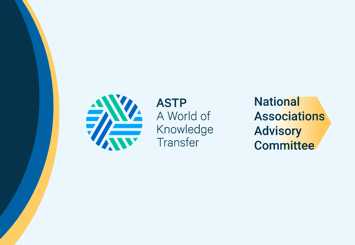
Academia–Industry Collaborations: Moving…
Across Europe, universities and research institutions are being called upon to play a more active role in driving…

The efficiency of drug delivery to the lungs depends on various parameters, some of which are influenced by the inhalation system being utilised. The smart nebulisation technologies developed by Activaero targets drug delivery to specific areas of a patient’s lungs by providing optimised inhalation flow, volume and timing.
For millions in the world, breathing is not an exercise that can be taken for granted.
According to the World Health Organization’s latest estimates, 235 million people suffer from asthma, 64 million have chronic obstructive pulmonary disease (COPD), and millions more have under-diagnosed chronic respiratory diseases. These account for a significant population that, every now and then, requires assistance to perform the most necessary act of living: breathing.
Inhalation of aerosols is the preferred method of drug delivery in the treatment of respiratory diseases such as asthma and COPD, as well as cystic fibrosis, a genetic disease of the lungs and the digestive system that affect about 70000 people globally.
However, unlike oral and intravenous administration of medication, the efficiency of inhalation therapy is affected by various factors.
Dr. Gerhard Scheuch, founder of Activaero and former head of the aerosol research team at the Helmholtz Center Munich, says many of the companies that conducted aerosol research thought that the aerosol particle size is the most efficient predictor to get the aerosol particle into the patient’s lungs. Hence, these companies only manipulated or varied the aerosol particle size.
Akita JetScheuch, a physicist who has spent 18 years studying the behaviour of aerosols, knew that this principle was ‘physically not absolutely correct.’ He explains: ‘The aerosol delivery systems in the pharmaceutical industry were all not very efficient. We talked about efficiencies between 5% and the maximum 20% of what you filled in a delivery device and what went into the lungs.’
What most researchers did not take into account at that time was the patient’s breathing pattern. ‘It’s very simple. If you don’t inhale at all, you will not get anything into the lungs,’ Scheuch says. ‘You can make the particles as small as you want but they will not go into the lungs if you don’t inhale, and so the breathing pattern–how patients inhale–predicts the amount of particles that go into different regions of the lungs.’
That was the original idea on which Activaero was founded. Today, the inhalation devices developed by Activaero solve some of the biggest problems in inhalation therapy, including the correct dosage and accurate delivery of medicines to the specific area in the lungs of patients with severe asthma or cystic fibrosis.
The beginning of Activaero can be traced to a few encouraging words and a lot of encouraging research results.
Scheuch had been working for the Helmholtz Zentrum München and for 18 years had been conducting fundamental research on aerosol particles and their behaviour–how they enter, aredeposited into, and are eliminated out of the lungs. The institute’s director, noting the practicality of his study, remarked: ‘What you’re doing here would surely be exciting for the pharmaceutical industry.’
This, and the success of his initial studies, emboldened Scheuch to bring his research out to the industry. In 1998, he entered and won a business plan competition, and invested the prize money, along with his own funds, to launch Inamed GmbH. From this start-up, he would carve out Activaero seven years later.
Ascenion, as technology transfer partner of Helmholtz Center Munich, negotiated licences that the institute granted to Inamed. From 1998 until 2001, Scheuch and his team, including a few engineers, used the same labs and enjoyed all the available technology at the Helmholtz Center, which was a shareholder of Activaero. ‘Our idea was to develop a device that takes the breathing pattern of the patient into account,’ he says.
The FAVORITE principle
The unique therapy concept behind Activaero’s smart nebulisation technologies—AKITA® JET, AKITA®2 APIXNEB and FOX—is called Flow and Volume Regulated Inhalation Technology (FAVORITE).
FAVORITE actively regulates inspiration flow and inhalation volume, making it possible to guide and control inhalation patterns according to each patient’s specific condition and therapeutic requirements, thereby delivering the drug to the patient’s lungs in an optimal manner and minimising unwanted deposition in the throat.
To provide targeted inhalation therapy for applications where precise drug delivery to the lungs is required, the AKITA Jet, AKITA 2 APIXNEB and FOX smart nebuliser delivery systems create a liquid aerosol and coordinate delivery after the patient has inhaled. Controlled application of branded and generic drugs is achieved through a modified nebuliser unit that delivers the nebulised aerosol tailored to the individual patient’s breathing capacity.
FAVORITE is currently utilised in multiple clinical and several preclinical stage programmes, and thus contributes to the development of drugs.
For over two years, they studied different patient populations – COPD, asthma, and cystic fibrosis – to find out the breathing pattern of these patients and discover a way to use this breathing pattern to get as much drug as possible into the specific lung areas that require it. ‘From this research, we found different breathing patterns which are optimal for the different diseases and to deposit particles deep in the lung,’ Scheuch says.
SMART devices
According to Scheuch, in 1999, a large international pharmaceutical company wanted to be able to deliver a protein deep into the lungs of COPD patients. The pharmaceutical company, however, halted the project because in a study, it could only get 4% of the protein into the deep lungs of the patients. Given the cost and rarity of the protein, which was made out of blood plasma, the company said it could not work with such bad efficiency.
This provided an opening for Scheuch and his team. ‘We told them we had an idea to increase this efficiency,’ he recalls telling the pharmaceutical firm. ‘We could show that when we worked within an optimal breathing pattern of these patients, we could easily get about 60% of the drug through the deep lungs of the patients.’
The increased efficiency promised by Scheuch’s proposal made the project possible and brought the first contract to Activaero.
Activaero went on to develop the first AKITA device, a breath-actuated nebuliser that controls the patient’s breathing pattern, for the German pharmaceutical company. Later, realising that the breathing pattern has to be adapted to each patient’s lung function, Scheuch and his team developed the SMART CARD technology and introduced it into the AKITA system to optimise the device for a specific patient.
Working with different lung function parameters, Scheuch’s team categorised the patients depending on their breathing pattern and programmed a specific card for each pattern. This concept improved lung deposition even more. ‘At the moment, we can realize 75% to 85% efficiency, which is very high,’ Scheuch says.
‘If you had one drug, for example, corticosteroid for asthma, you need it in the deep lung, in the airway. So we know the target and we know that these are asthma patients. We just need the information, e.g. how big is the lung of the patient? Is it a child, which has a lung volume of say, 1 litre, or is it a big athlete who has a lung volume of 8 litres?’ Scheuch explains. This information allows them to program the SMART CARD for a certain category of patients.
Big benefits
Patients with severe cases of pulmonary diseases benefit most from the smart nebulisation technologies, as they are able to get the drug very deep into the patients’ lungs. According to Scheuch, more efficient drug delivery not only means lower costs for patients, health insurers and pharmaceutical companies, but also less treatment time for patients.
”More efficient drug delivery not only means lower costs for patients, health insurers and pharmaceutical companies, but also less treatment time.”
One of the problems with inhalation therapy for patients with cystic fibrosis is the inhalation time. ‘Some patients inhale for two-and-a-half hours every day because they need a high dose of antibiotic in the lungs,’ Scheuch says. ‘With our technology, you can reduce treatment times very significantly.’ A study published earlier this year also showed that patients with severe asthma were able to reduce oral corticosteroid use through the smart inhalation technologies.
Partnering with pharmaceuticals
In its first years of development, Activaero conducted studies and investigations with pharmaceutical companies, from which it derived its income. When the company needed larger proof of concept studies, Activaero turned to venture capital and from 2009 to 2012, raised a total of €17M.
The company used part of the money to develop FOX, a handheld device that allows rapid drug delivery and enables the wireless transmission of inhalation parameters and compliance data.
It also developed other smart inhalation technologies such as the AKITA® JET, AKITA®2, and APIXNEB. Because of the success of these smart inhalation technologies, which are marketed in Germany, Activaero had revenues of €6M to €10M per year, says Scheuch.
In March 2014, Vectura acquired Activaero. Ascenion’s proceeds from the sale of its equity in Activaero flowed to the Life Science Foundation for the Promotion of Science and Research, which funds various research projects of the endowing institutes, including the Helmholtz Zentrum München.

Across Europe, universities and research institutions are being called upon to play a more active role in driving…

In an era where universities and research organisations are called upon to deliver more than just excellent teaching…

In the ever-evolving landscape of knowledge transfer, data doesn’t just tell a story—it defines direction. With…
Join our newsletter and get the latest news